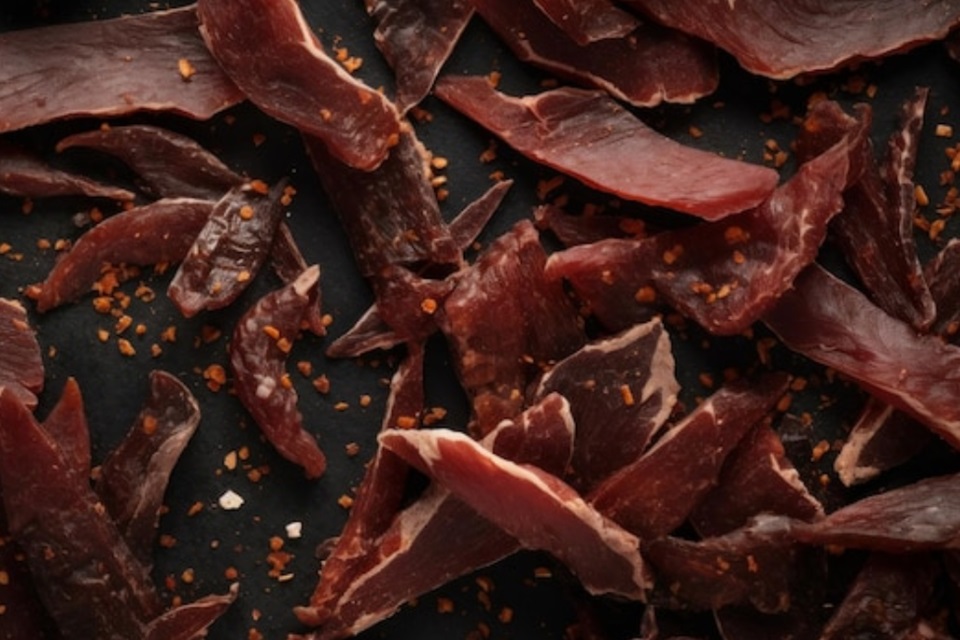Biltong and Jerky have a couple of things in common. They are both types of dried meats that double up as perfect on-the-go snacks flaunting rich protein, vitamin, and mineral content. However, despite their striking similarity, a lot goes on when it comes to distinguishing South African biltong jerky and beef jerky.
Understanding Biltong
Biltong is a type of shredded meat that is cured in a vinegar solution before it is air-dried and, in some cases, smoked, which makes it saltier and softer than beef jerky. Biltong differs from jerky in terms of appearance, and any meat enthusiast can easily tell their differences just by looking at their visual features.
Origin Of Biltong
Biltong’s history dates back to the early 1600s when native South Africans discovered it as a brilliant food preservation method. The basics here involved curing (treating) the meat in a concentrated salt solution before hanging the meat to air-dry in the sun.
Later, in the early 1800’s, European settlers arrived in South Africa. They introduced to the natives a new preservation technique that seemed to be more refined and sophisticated. Their process involved meat marination in a vinegar and spice solution. The spices they primarily used included pepper, coriander, and cloves. This was the birth of biltong jerky.
Biltong is a word of Dutch origin. It is a combination of two words; ‘Bil’ (which translates to meat) and ‘tong’ (which translates to strip). So, in short, biltong means ‘beef strip’.
How Is Biltong Made?
- Choose your meat (it could be anything from beef to ostrich, kudu, or even game)
- Cut your meat into thick strips.
- Season your meat (traditionally, the spices used were salt, black pepper, coriander, ground coriander seeds, ground pepper, Worcestershire sauce, and rock salt).
- Air-dry your meat at room temperature, ensuring that there is enough airflow.
- Leave it for a couple of days and your biltong will be ready for storage.
Typical Biltong Flavor Profile & Texture
Biltong is known for its rich, savory, and distinctive, tangy flavor, making it a popular delicacy for many meat lovers. It is more of a perfect prosciutto and jerky blend but with a unique and characteristic flavor profile.
Biltong varies depending on the time it has taken to air-dry the meat.
‘Wet’ biltong refers to meat that has been air-dried for a relatively short time, resulting in pinker meat with a softer texture. ’Medium’ biltong features a longer air-drying time, resulting in redder meat with a stronger flavor and chewy texture. ‘Dry’ biltong is usually air-dried for the longest time. The results are intense flavor coupled with the chewiest of textures.
Understanding Beef Jerky

Beef jerky is typically sliced beef marinated in rich spices before being cooked in heat. The end product is a dry and rather chewy chunk that leaves your mouth filled with a rich and savory flavor. Beef jerky takes a considerably shorter time to prepare than beef biltong, making it an easier go-to for regular meat chefs.
Origin Of Beef Jerky
Beef jerky owes its origins to Quechua Indians, a native tribe of South America from the renowned Inca Empire back in the early 1550s. The word Jerky derives from ‘Ch’arki’, a Quechua word that directly translates to ‘dried and salted meat’.
How Beef Jerky Is Made
- Slice your lean beef into relatively thin pieces (not so thin though, maybe 3 cm)
- Marinate the beef in seasoning and spices
- Cook and dehydrate the meat
- Vacuum-seal your beef once ready
Typical Beef Jerky Flavor Profile & Texture
Beef jerky’s flavor profile can be characterized as salty, peppery, mildly smoky, and slightly sweet. Given its rich flavor, beef jerky blends in perfectly with a wide range of additional flavors.
The texture of beef jerky can be described as chewy.
Direct Comparison: Biltong Vs Beef Jerky
While both are tasty beef snacks, there are some striking differences between biltong and beef jerky:
Flavors
Jerky flaunts a smoky flavor with some hints of sweetness. Bilong, on the other hand, is saltier and savory, and it features a rich vinegar profile.
Textures
Texture happens to be the most striking difference between biltong and beef jerky. While biltong has a softer and fluffier texture, beef jerky is somewhat tougher in texture, making it chewier.
Nutritional content
Biltong and beef jerky’s nutritional value differ when it comes to their sodium and fat contents. Beef jerky has a higher sodium concentration (not detrimental to your health), while biltong contains a higher fat content.
Shelf-life & Storage Methods
Jerky uses heat and cooking for preservation, while biltong’s preservation approach is a no-heat method. Biltong takes longer to prepare compared to beef jerky.
Consumer Preferences & Usage
There is no absolute winner when it comes to beef jerky and biltong; it all depends on personal preference, making the choice somewhat subjective. You can get a variety of jerky items from reliable shops such as the Jerky brand. Jerky takes a shorter time to prepare compared to biltong, which makes it an easy pick.
In Conclusion
If you have been consuming beef jerky all your life, it is high time you buy biltong for a change. However, before you buy biltong, be sure to prepare yourself for the richness in flavor that this preserved meat has to offer.
Do you prefer biltong or beef jerky? What stood out for you before you made your choice?








No Comments